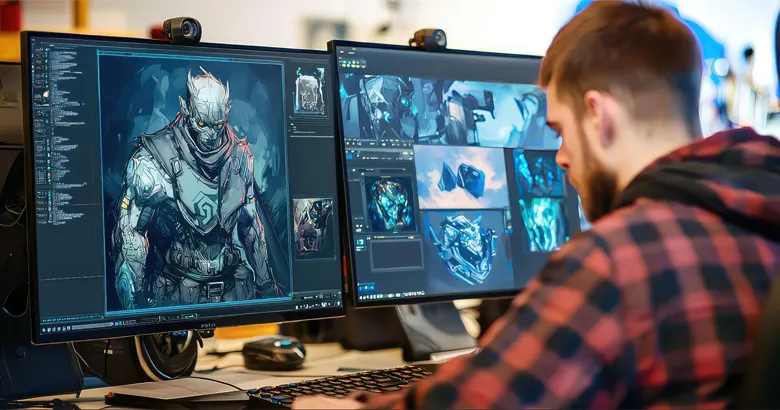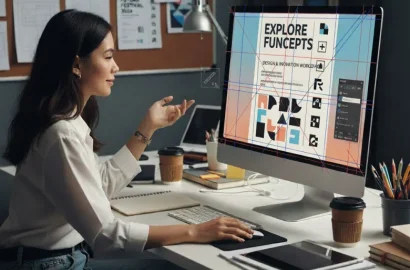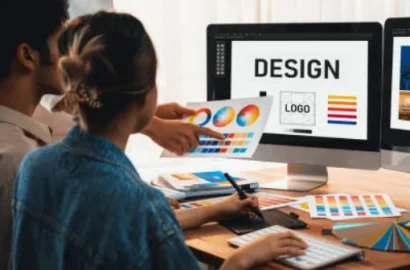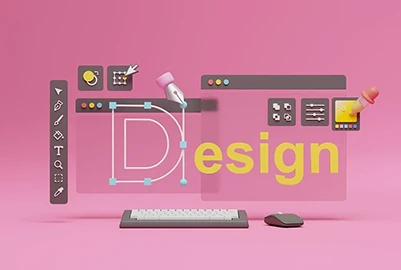Learn everything you need to know about character design—including the fundamental principles, best practices, and a step-by-step process.
Character design is a special niche within the broader graphic design discipline. It focuses on creating characters that connect with the target audience on an emotional level and help to tell a story—whether that’s within a movie, a video game, or marketing materials.
Perhaps you’re curious about what defines an effective character, or you want a practical guide you can follow from start to finish. Either way, you’ve come to the right place.
Here you’ll find everything you need to know about character design, including:
- What is character design?
- What is a character designer and what does a character designer do?
- The different types of character design
- The fundamental principles of character design
- A step-by-step guide to the character design process
- Tips and best practices for effective character design
- Key takeaways and further resources
First things first: what exactly is character design? Let’s set out a definition.
What is character design?
Character design is the art and process of creating distinctive, engaging characters that help tell a story and support the overarching narrative. It is also a popular discipline within graphic design.
It involves conceptualizing and illustrating each character’s visual appearance, personality, and behavior—making sure they resonate with the target audience and align with the surrounding context.
There are many different scenarios where character design might be relevant, including:
- Branding, marketing, and advertising
- Animated films, TV shows, and videos
- Video game design
- Publishing (e.g. comic book and graphic novels)
- Live-action movies
- Virtual Reality (VR) and Augmented Reality (AR)
- UI UX design—e.g. designing characters that feature within apps and software (consider the famous Duolingo owl)
We’ll explore the different types of character design shortly. To begin with, though, let’s consider the role of a character designer.
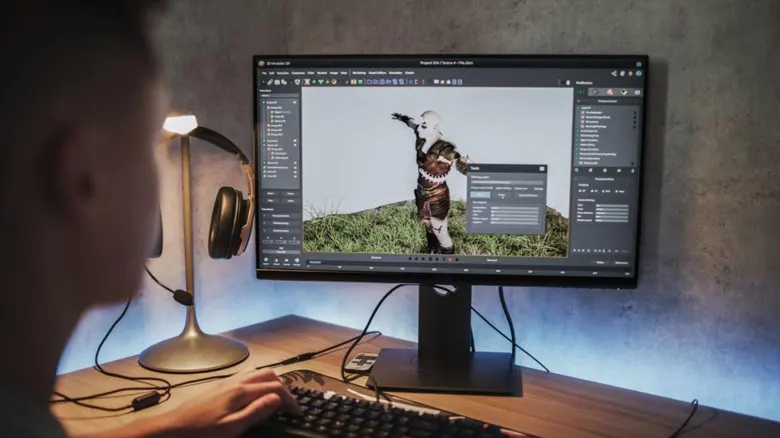
What is a character designer and what does a character designer do?
Character designers are responsible for conceptualizing characters and bringing them to life across a range of media—including animation, video games, comics, and branding.
They work closely with directors, writers, and other creative stakeholders to develop characters that support the project’s narrative, have the desired emotional impact on the target audience, and, where necessary, align with the overall brand.
The exact role of a character designer varies depending on the context and the medium. But, generally speaking, they take on the following tasks and responsibilities:
- Research: Conducting research to understand the project context, genre, and any relevant historical, cultural, and artistic references that can help with the creation of authentic and compelling characters.
- Concept development: Brainstorming and coming up with initial character concepts based on the project’s story, themes, goals, and target audience.
- Sketching and illustration: Producing detailed sketches and illustrations of characters, depicting multiple angles and poses. This includes creating facial expressions, gestures, and body language to accurately convey each character’s personality and emotions.
- Costume and accessory design: Designing clothing, props, and accessories that help to enhance each character’s identity and bring them to life.
- Gathering and implementing feedback from creative directors, producers, and other key stakeholders.
- Character documentation: Maintaining a character style guide to ensure consistency throughout the project.
No matter where they work, character designers play a crucial role in creating memorable and relatable characters. They are skilled artists, designers, and storytellers—and great collaborators.

What tools do character designers use?
Character designers rely on a variety of tools to bring their ideas to life, each catering to different aspects of the design process. Some of the most popular tools for character design include:
- Adobe Photoshop and Illustrator: These industry-standard programs are perfect for 2D character design and illustration. Photoshop excels in painting and detailing, while Illustrator is ideal for creating scalable, vector-based designs with clean lines and shapes. You can learn more about Adobe Illustrator in this guide, or check out this introduction to Photoshop.
- Procreate: This intuitive iPad app has become a favorite among digital artists for sketching and painting. Its customizable brushes, layering options, and touch-friendly interface make it an excellent tool for creating quick concepts or polished character designs on the go.
- Blender: A powerful, open-source tool for 3D modeling, rigging, and animation. Blender is typically used by character designers working on video games, CGI films, or VR projects, offering everything needed to create dynamic, fully realized 3D characters.
- ZBrush: This software specializes in high-resolution 3D sculpting, making it perfect for creating intricate character models with fine details like wrinkles, textures, or ornamental designs. ZBrush is widely used in industries such as gaming and film.
- Clip Studio Paint: Known for its precision and versatility, this program is a top choice for artists designing comic book and manga characters. It offers specialized tools for inking, panel creation, and vibrant coloring to bring graphic storytelling to life.
For more design tools, check out our complete round-up of the best graphic design software, tools, and apps.
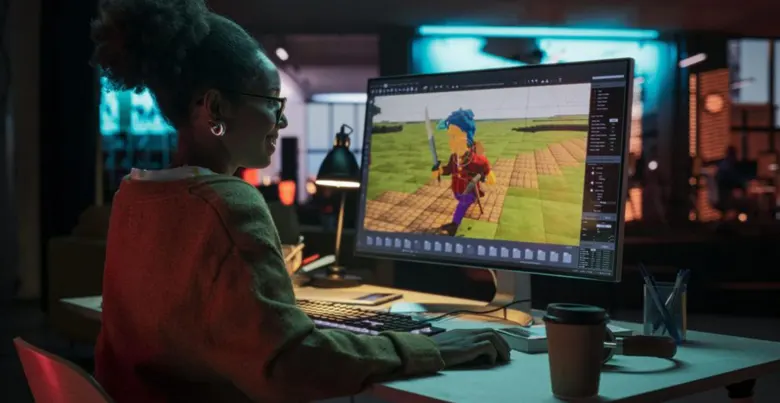
The 8 different types of character design
There are many different types of character design, each with its own unique approaches and techniques. We’ll introduce the most common types now.
1. 2D character design
2D character design focuses on creating flat, two-dimensional characters often used in animations, comics, and illustrations. These designs emphasize strong silhouettes, bold color palettes, and exaggerated features to ensure the characters are visually striking and easy to recognize.
When creating 2D characters, designers must prioritize clean lines and dynamic poses to convey personality and emotions effectively within a limited dimensional space.
2. 3D character design
3D character design involves creating fully realized, three-dimensional characters using modeling software such as Blender or Maya.
This type of character design is crucial for video games, CGI films (films that use computer-generated imagery), and VR experiences, requiring detailed textures, realistic anatomy, and rigging (the process of creating a skeleton for the character to enable movement).
In 3D character design, the focus is not only on aesthetic appeal but also on ensuring that characters translate well into motion and interaction within digital environments.
3. Character design for animation
Animation character design is all about flexibility and expressiveness. Characters must be designed to move fluidly, with features that remain consistent across a range of poses and actions.
When developing animated characters, it’s important to create designs that are simple enough for repeated use—without compromising on personality and visual appeal.
4. Character design for films
In film, character design must align with the cinematic narrative and visual style of the movie. Whether live-action, animated, or a combination, these designs often require a high level of detail to be worthy of the big screen.
In this context, character designers collaborate closely with directors to ensure that characters embody the story’s themes, incorporating elements such as costumes, textures, and emotional depth into their designs.
5. Character design for video games
In the context of video games, character design is essential for creating an immersive and captivating gaming experience.
Video game character design requires a careful balance between aesthetics and functionality. Designers must consider technical constraints like polygon counts (the number of polygons used to create a 3D model, which affects the model’s level of detail and performance) and rendering efficiency, especially in real-time graphics.
In gaming, characters often include customization options and are designed to interact seamlessly with gameplay mechanics. The focus is on making characters visually compelling while also ensuring that they’re responsive and interactive in a virtual environment.
6. Character design for branding
Brand character design involves creating mascots or icons that encapsulate a brand’s identity. These characters need to be simple, memorable, and versatile for use across various mediums—from digital platforms to print to physical merchandise.
When creating characters for branding purposes, designers often emphasize emotional appeal, using expressive traits and bold designs to create a connection with the audience.
7. Character design for comics and graphic novels
Character design for comics and graphic novels focuses on creating characters that are visually engaging and fit within the story’s style.
In this context, designers must consider how characters look from different angles and in various poses, ensuring they are recognizable and dynamic across multiple panels.
Each character’s appearance, expressions, and clothing are carefully crafted to reflect their personality and role in the story, while also working seamlessly within the layout of the comic or graphic novel.
Designers must also consider how the characters will appear in print, ensuring that designs are clear and legible even when reduced in size or printed in black and white. As such, they must pay close attention to line quality, contrast, and detail.
8. Character design for mobile apps and games
In mobile apps, characters can help to guide the user, provide encouragement and feedback, and make the experience more engaging and interactive. Referring back to our earlier example, consider how the famous Duolingo owl guides users through their language-learning journey.
When designing characters for mobile, it’s essential to prioritize simplicity and clarity to accommodate smaller screens. Bold colors, clean lines, and instantly recognizable silhouettes are key.
Now that we’re familiar with the different types of character design, let’s consider the fundamental principles and properties that character designers must adhere to.

The fundamental principles of character design
No matter the context, effective character design is rooted in these 6 key principles:
1. Silhouette
A strong, recognizable silhouette ensures that characters are easily identifiable, even from a distance or when viewed in a minimalistic context.
For example, Mickey Mouse’s iconic round ears and simple shape make him instantly recognizable, even when seen in silhouette. The silhouette should clearly reflect the character’s role, such as a bulky shape for strength or a slender form for agility.
2. Style and tone
The character’s design should align with the overall aesthetic and mood of the project, whether it’s realistic, stylized, or abstract.
For example, in the Pixar film Toy Story, the characters’ exaggerated features and smooth, rounded design fit the playful and imaginative tone of the movie. In contrast, with something like The Lion King, a more realistic design style where the characters are designed to evoke a more serious and lifelike tone, would be needed.
3. Functionality
Characters must serve their intended role effectively within the story or gameplay—whether as a hero, villain, or sidekick.
In video games like Super Mario Bros., Mario’s design is practical: his short stature and overalls convey a down-to-earth hero who’s easy to relate to, while his bright colors and distinct features make him stand out in a fast-paced environment.
4. Personality
In character design, personality is conveyed through details such as facial expressions, gestures, and posture, making sure that characters are relatable and engaging.
For example, in How the Grinch Stole Christmas, the Grinch’s mischievous personality is reflected in his sly grin, hunched posture, and exaggerated, sneaky movements. These details immediately communicate his devious nature, making him both humorous and memorable to the audience, without much dialogue.
5. Color palette
A well-chosen color palette enhances visual appeal and reinforces the character’s defining traits or associations.
For example, Elsa from Frozen is designed with a cool, icy color palette featuring shades of blue, white, and silver. These colors not only reflect her ice powers but also convey a sense of elegance, isolation, and calmness. The choice of colors aligns with her character’s journey and the film’s overall theme of self-discovery and empowerment.
Consistency
The character’s design must remain consistent across different poses, expressions, and actions. This ensures that the character feels stable and believable.
A good example is SpongeBob SquarePants: no matter the situation, his basic shape, yellow color, and unique details (like his square body) remain consistent, whether he’s in motion, interacting with other characters, or showing extreme emotions.
You can think of these as the core building blocks of character design. As you move through the character design process, keep these fundamental principles in mind.
A step-by-step guide to the character design process
Are you ready to get started with character design? Here’s a practical, step-by-step guide you can follow—from research and ideation, right through to finalizing and testing if your characters are ready for implementation.
1. Research and ideation
The character design process begins with research and ideation.
With the project brief to hand, start by exploring the context and the narrative surrounding your character(s). Consider the role and purpose they should serve within the story—be that the hero, villain, sidekick, or supporting character.
Conduct research to explore various factors that will shape your character’s design, such as art styles, cultural references, fashion, and any similar characters within the same genre. If you’re designing a superhero, for example, you might take inspiration from existing characters like Spider-Man or Wonder Woman.
As you gather inspiration for your characters, be sure to keep your target audience in mind. Think about what kinds of visual styles and personality traits will resonate with them and help them relate to the character.
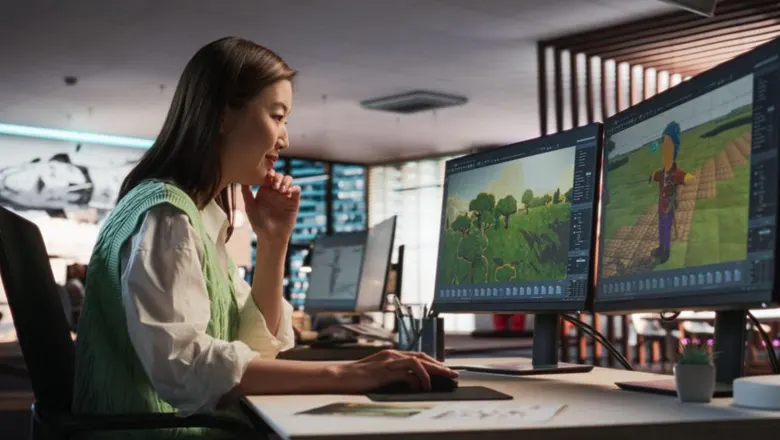
2. Sketching concepts
Next, you’ll sketch out early-stage concepts for your characters. At this stage, the goal is to create rough sketches to explore different shapes, proportions, and overall styles without getting too caught up in the finer details.
Start with basic shapes—such as circles, squares, or triangles—to establish the character’s body and proportions. Experiment with different silhouettes to see what works best for the character’s personality and role (if you need a refresher on the importance of silhouette, refer back to the fundamental principles of character design we covered earlier).
You might also experiment with different artistic styles and aesthetics for your characters, bearing in mind their personality, the surrounding context and genre, and the target audience.
If you’re designing a robot character, for example, you could try out different body types—such as boxy and mechanical versus more fluid and sleek.
This step is all about experimenting and exploring your options, so don’t worry about getting your characters perfect just yet. There’s plenty of time for perfection later on!
3. Defining key features
Once you have your basic sketches, focus on defining key features for your characters. This is where you’ll really start bringing the character to life by highlighting physical traits such as clothing, accessories, and distinguishing features that reflect their personality.
As you go through this step, think about how the character’s design communicates who they are. What do they wear? What accessories do they carry? What’s their posture like? All of these factors should provide visual clues about the character’s role in the story.
Again, we can use Elsa from Frozen as a great example here. Her sparkling blue gown and long, flowing hair not only convey her elegance but also symbolize her connection to the cold, magical world she inhabits.
4. Refining and iterating character designs
By now, your characters are really starting to take shape! Next, you’re going to refine and iterate on your initial concepts to get them even closer to their final form.
Revisit your character sketches and fine-tune the smaller details. You might adjust their facial expressions, posture, color choices, and textures, or tweak their props and accessories. If you’re designing a villain, for example, you can experiment with a range of facial expressions until you find their most menacing look.
Like any design process, feedback is crucial in character design. This is a great moment to share your characters with key stakeholders to see how they resonate—and to gather ideas for improvement.
5. Finalizing the design
After gathering feedback and refining your character concepts, it’s time to finalize the designs. This is where you’ll create a polished version of your character, cleaning up the lines, finalizing the colors, and adding more intricate details.
Focus on ensuring that the character looks cohesive and visually appealing. And, if your character will appear in different mediums—such as animation or marketing materials—make sure that the design works well in all contexts.
6. Testing and implementation
Last but certainly not least: the all-important testing stage. After finalizing your characters, it’s crucial to place them in the context in which they’ll be used to ensure that they perform and appear as expected.
Whether it’s testing the character in animation, gameplay, or in printed materials, you need to make sure that the design not only looks good but accurately fulfills its role within the intended environment.
Does the character look dynamic and believable in different poses and actions? For example, a video game character would need to be tested in various gameplay scenarios—running, jumping, and interacting with different objects—to check that the design works well in all possible contexts.
Throughout the testing stage, weigh up whether or not the character is functional, visually consistent, and effective in all scenarios. Yes? Then your characters are ready for implementation!
You’ll finish by handing them over to the relevant team—such as animators, developers, or marketing specialists—depending on the project. This team will integrate the characters into the final product, whether that’s a game, film, or marketing campaign.
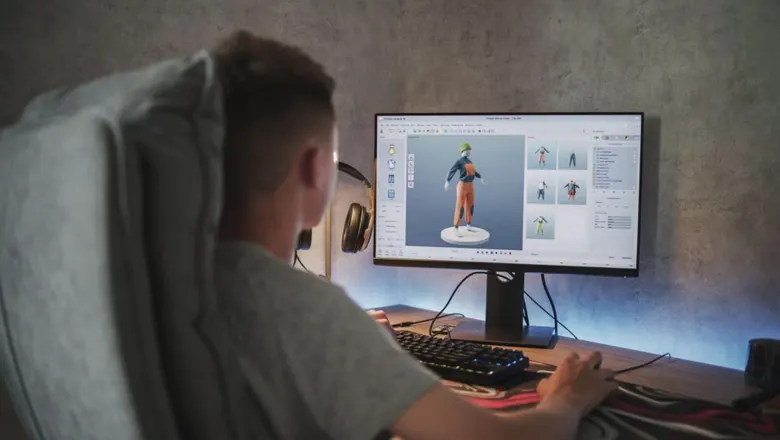
Tips and best practices for effective character design
As you follow the character design process, remember these tips and best practices. They’ll help you create engaging, effective, and impactful characters.
1. Keep the audience in mind
This is the golden rule in any design context, including character design: always focus on your target audience’s preferences and expectations.
If you’re designing characters for a children’s cartoon, you’ll want to keep them colorful, friendly, and approachable. If you’re designing characters for an adult audience, on the other hand, you can give them a more complex or nuanced appearance.
Beyond aesthetics, consider cultural references, emotional appeal, and relatability. You want to create characters that connect with your target audience and have the desired impact.
2. Iterate often
Don’t fall into the trap of perfectionism. You don’t need to get your character designs perfect on the first attempt—or even the second or third. Character design is an iterative process, so don’t be afraid to regularly revisit and refine your concepts and go through multiple feedback rounds.
Iterating and building your characters incrementally helps to uncover new possibilities along the way—and will ultimately improve the quality and impact of the final product.
3. Focus on simplicity and clarity
Even when creating more complex, nuanced characters, don’t overdo it on the details. If your characters are too elaborate and intricate, you risk diluting their visual impact.
Prioritize simplicity and clarity to create characters that are easy to recognize and remember. This is especially important for characters that appear in fast-moving contexts, like animations or video games. Start with bold shapes and clean lines and go from there.
4. Maintain consistency
Make sure that your character’s appearance and defining traits remain consistent throughout the project. Keep their proportions, colors, and key features identical across different poses, expressions, and contexts.
Consistency in character design is key for building a sense of familiarity and trust with your audience—especially when it comes to storytelling and branding.
5. Emphasize storytelling
A good character tells a story without words. Use visual elements like clothing, accessories, and posture to hint at their backstory, traits, and motivations.
A scar or worn-out armor might suggest that a character has been in battle, for example, while bright, playful attire could reflect a cheerful or mischievous personality.
Review your characters in relation to the overall script and story. Every detail should contribute to the narrative and deepen the character’s impact.
Key takeaways and further resources
We hope you’ve enjoyed learning about character design. It’s a highly rewarding process—allowing you to unleash your creativity and work across many different contexts to bring your imagination to life.
Character design is just one of many specialist fields within the broader design discipline. If you’d like to continue exploring the wonderful world of design, we can recommend the following:
- What Is Animation Design and What Does an Animation Designer Do?
- A Complete Guide to Motion Graphic Design
- An In-Depth Guide to the Top Graphic Design Jobs in 2025 (and Their Salaries)
Next Steps
In case you need further assistance, here are some of our resources you can consider:
- Watch this session by design veteran and AND’s Academic Head, Prachi Mittal, and our Course Lead, Soumya Tiwari.
- Talk to a course advisor to discuss how you can transform your career with one of our courses.
- Pursue our Graphic Design courses – all courses are taught through live, interactive classes by industry experts, and some even offer a Job Guarantee.
- Take advantage of the scholarship and funding options that come with our courses to overcome any financial hurdle on the path of your career transformation.
Note: All information and/or data from external sources is believed to be accurate as of the date of publication.

